Respiratory physiology is an important topic in the undergraduate curriculum. Learn how a spirometer works and how to use one in your teaching lab.
Importance of respiratory physiology in the undergraduate physiology curriculum
To be successful graduates, medical and physiology students need to understand how breathing works, and how it changes as a result of pathology.
Unfortunately, students appear to struggle with respiratory physiology. Although simple and familiar on the surface, breathing is most usefully discussed in the dense language of physics and math - which can scare students.
“Many students still seem to have more difficulty understanding the physiology of the respiratory system than they do any of the other organ systems” (Modell, 1997).
Here, we’re breaking down how you can use a hand-held spirometer to easily teach students about airflow, tidal volume, and respiratory rate - and in doing so, deepen their understanding of the overall respiratory system.
Challenges undergraduate students face in learning respiratory physiology
Often, students arrive at university with existing misconceptions about respiration. One study presented up to 11 common misconceptions held by students! (Michael et al., 1999).
In a survey of ~700 undergraduate students, misconceptions about respiratory physiology were widespread and were held by students from a range of institution types, including community colleges, large research universities, and a small private university (Michael et al., 1999).
“I am currently in my 3rd year of my undergrad and for whatever reason I continue to get tripped up on the fine physiology of the renal and respiratory systems. Hopefully I’m not the only one..😬” - Reddit
Second-year physiology students in one small study identified respiratory volumes and capacities, and dead space, as difficult concepts to understand when learning about respiratory physiology (Horrigan, 2018).
“Obviously we are doing something wrong when we teach respiratory physiology, or we are not doing something that we should be doing.” - (Modell, 1997).
Ways to teach respiratory physiology
Students respond well to practical laboratory classes (for example, in one study, 96% of physiology students reported that lab classes were helpful in learning physiology concepts; Horrigan, 2018).
Furthermore, active learning methods (peer instruction models, interactive games, simulations, etc) have been shown to improve student performance on a respiratory physiology exam by 25% compared to traditional lecture methods (Rao & DiCarlo, 2001).
One way to introduce active learning to your respiratory lab practical is by using a hand-held spirometer.
What is a spirometer?
Spirometry is the study of lung function by measuring the air that enters and exits the lungs (Merriam-Webster, 2024).
Important data points measured are volume of air, rate of air flow, and breaths per minute.
A spirometer is a device that is used in clinical, research, and educational contexts to conduct these measurements.
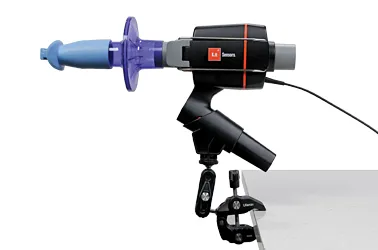
The Lt Sensors Spirometer
How does a spirometer work?
During spirometry testing, a volunteer will breathe into the spirometer, which will measure the air passed through the device.
A pneumotachometer is one example of a spirometer that uses flow rate to measure volume. Air is breathed through a resistive element that creates a pressure difference across the channels. A pressure sensor converts this pressure difference into an electronic signal, which can be displayed in Lt.
This electronic signal can be interpreted to provide information about the volunteer’s respiration, including airflow, tidal volume, respiratory rate, and expired minute volume.
- Airflow: Contraction and relaxation of respiratory muscles changes the volume of the thoracic cavity and the pressure within it. These changes facilitate airflow into and out of the lungs, measured in liters per second (L/s).
- Tidal volume: Respiration consists of repeated cycles of inspiration followed by expiration. During the respiratory cycle, a specific volume of air is drawn into and then expired from the lungs; this volume is the tidal volume (VT).
- Respiratory rate: In normal ventilation, the rate of breathing (breaths/minute; BPM) is approximately 10 to 12 respiratory cycles per minute. This value varies with the level of activity.
- Expired minute volume: The product of BPM and VT is the expired minute volume, which is the amount of air exhaled in one minute of breathing. This parameter also changes according to the level of activity.
For example, the data panel below shows airflow, tidal volume, and respiratory rate data being collected simultaneously from the Lt Sensors Spirometer in a lab setting.
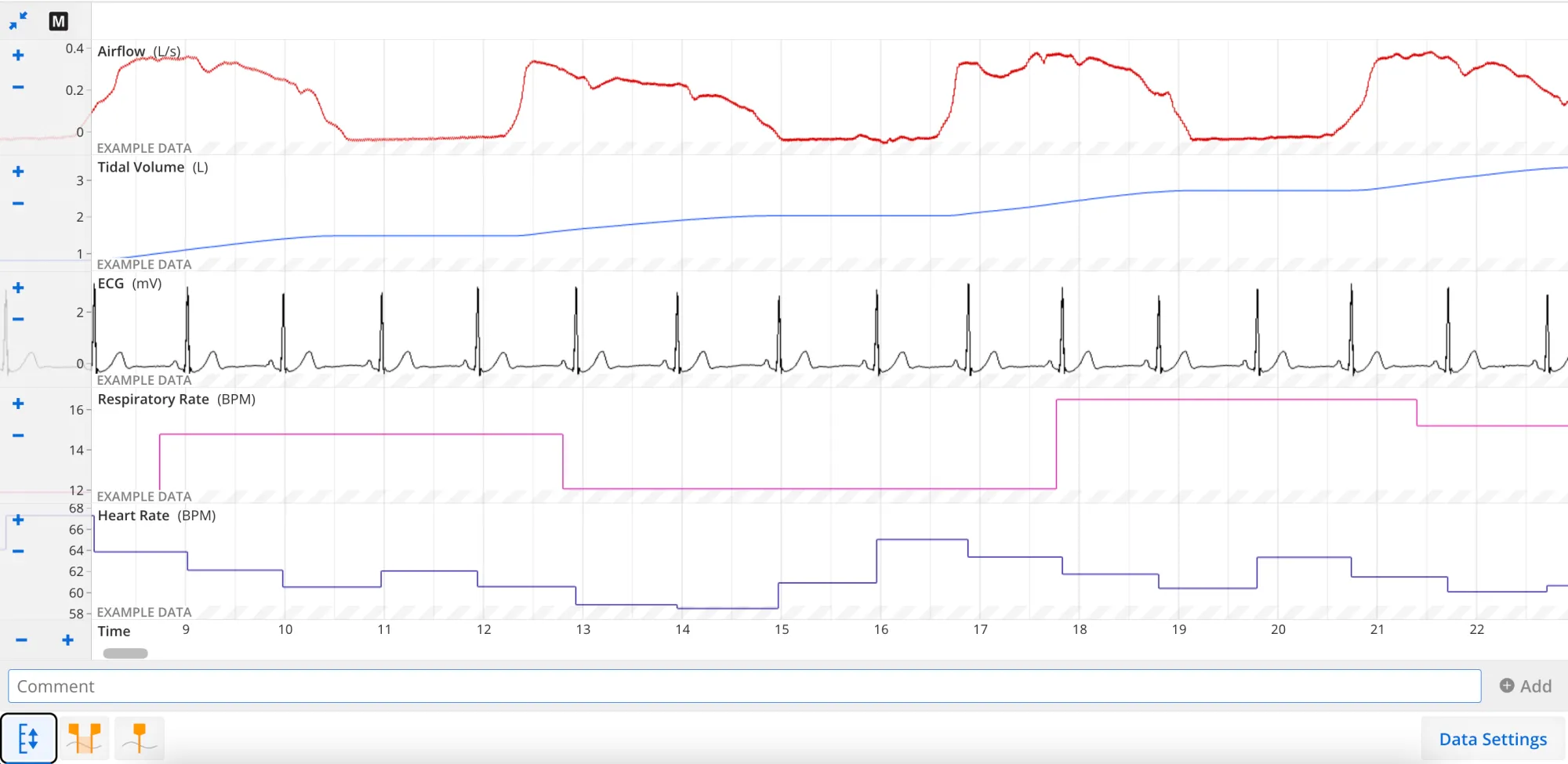
Why use a spirometer when teaching respiratory physiology?
Using a spirometer in the undergraduate laboratory introduces hands-on, active learning to your course and increases the chances of student success. Remember, active learning approaches in a respiratory laboratory resulted in a 25% increase in student achievement (Rao & DiCarlo, 2001).
Practical exercises with immediate feedback
When students use a spirometer, they receive immediate feedback as a result of their (or the volunteer’s) actions. Their breathing is recorded and they can see exactly the volume of air produced and rate of breathing in real-time.
Students also develop experience using hardware and interpreting graphical representations of data, key skills in their future careers.
Use a spirometer to investigate normal and impaired breathing
By modifying the filter supplied with the spirometer, you can simulate what it feels like to breathe with an chronic lung disease, as in:
- Obstructive lung disease (or COPD)
- Restrictive disease
- Asthma
Students develop empathy for the lived experience of their patients by observing how their own forced expiratory volume (the maximum amount of air they can blow out) changes with obstruction.
Additionally, this practical exercise will help them to better relate anatomical structure to physiological function - a key skill for successful graduates.
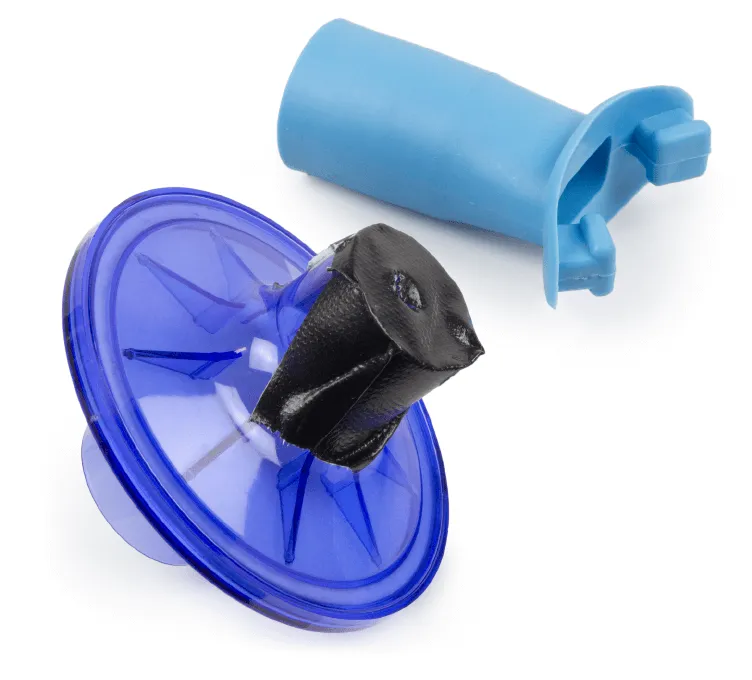
Students can simulate the effects of impaired breathing by using tape to narrow the aperture of the filter.
You can also choose to combine the practical lab protocols that use the spirometer with clinical case studies, which include videos of patients who suffer with the above conditions. In this way, students can link their theoretical learning with real-life context.
For example, students might take part in the obstructed airways simulation and then learn about Mrs. Mary Montgomery, who lives with COPD.
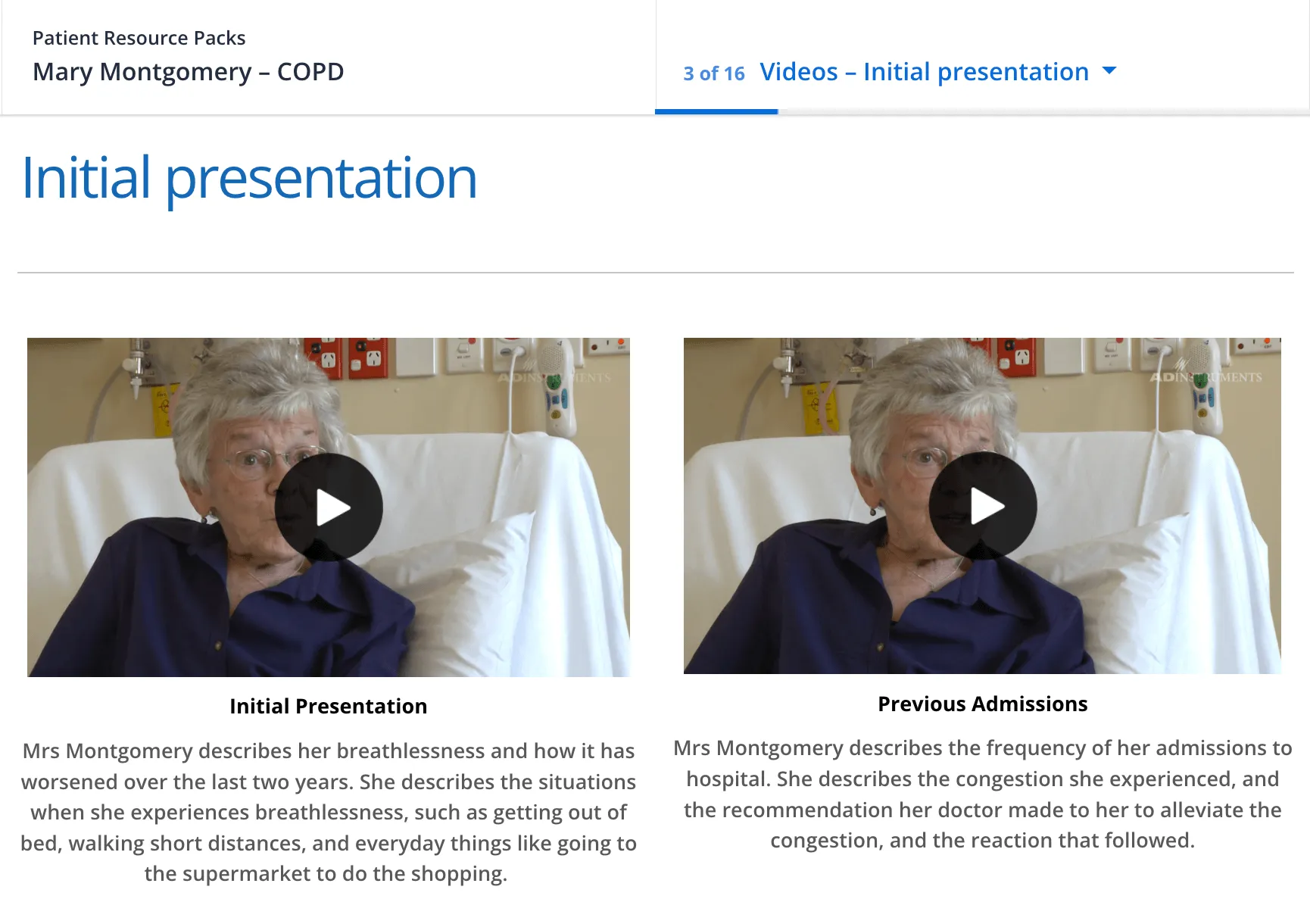
Combine with other sensors to understand body system integrations
You can combine a spirometer with other sensors to see how different bodily systems change in tandem with one another.
For example, you might choose to have students investigate the cardiorespiratory effects of exercise by using a spirometer and biopotential sensor together to record how breathing parameters and heart rate change in response to exercise.
Important features of a teaching spirometer
The ideal teaching spirometer makes teaching and learning easy by being easy to use, clean, and store. The new Lt Sensors Spirometer has been designed specifically for physiology educators to optimize the lab experience.
Hand-held and light
The Lt Sensors Spirometer can be held with one hand, meaning that students can easily record breathing data.
Its small size makes it easier to handle, store, and transport, while less dead space allows for more natural breathing and a better chance of recording textbook values with inexperienced students.

The spirometer can be held in one hand.
Ergonomic design
The result of an extensive design process, the spirometer has an ergonomic, angled handle and a thumb grip to help hold the spirometer level. No other spirometer available today has a design quite like ours!
If you’re looking to perform experiments that require hands-free use of the spirometer - for example, during strenuous exercise - you can do this easily by using the Spirometer bracket accessory and clean-bore tubing (available in the Lt Sensors Human Respiratory Kit) to allow for head movement.
Enhanced hygiene
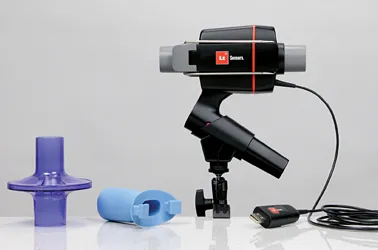
The spirometer can be disassembled.
The spirometer can be completely disassembled, and then individual parts can be washed. When used alongside disposable filters, this reduces the risk of disease transmission (an important consideration in the health and safety of your class).
See how the Lt Sensors Spirometer can be completely disassembled for cleaning »
USB connection
Rather than setting up a PowerLab and spirometer pod to record breathing variables, students can plug in the USB sensor and start sampling data immediately.
This portable spirometer also means that students can learn inside and outside the classroom - making your teaching far more flexible.
Integration with learning resources
The new spirometer also integrates with Lt, which centralizes data collection, analysis, lesson content, assessment, and course administration in one place. It’s a total teaching solution for physiology - and we designed it that way, to make it easier for students to learn and for you to teach.
Labs that you can teach with a spirometer
You can save time by combining the spirometer with a variety of respiratory lab practicals. Here are some ideas for topics that you can teach with the Lt Sensors Spirometer:
Airflow
Record spirometry signals and analyze these to derive dynamic respiratory parameters, such as forced expired volume in 1 second (FEV1). Compare these with parameters derived from a simulated airway restriction exercise. Students also learn how to perform peak flow tests to assess pulmonary function.
Cardiorespiratory Effects of Exercise
Record an ECG, blood pressure, and respiratory movements from a healthy volunteer, and compare the recordings made when the volunteer is at rest, during exercise, and immediately after exercise. Students will examine which factors that control heart rate, blood flow and ventilation before, during and after exercise.
Lung Volumes
Record and analyze spirometry signals to derive static respiratory parameters, such as lung volumes and capacities. Perform basic tests of pulmonary function and stimulate breathing with hyperinflated lungs.
Mechanics of Ventilation
Examine mechanical properties of the lung and chest wall by measuring pressures generated passively and by contraction of expiratory and inspiratory muscles.
All of these labs can be found in the Lt Sensors Human Physiology Collection, and are completely editable. Combine them with ready-made pre-lab preps for a complete physiology teaching solution.
The best way to teach respiratory physiology
Introducing a hand-held, digital spirometer to your classroom can make teaching simpler and increase student engagement. If you have any questions about using a spirometer to teach in your physiology course, get in touch!
Keep an eye out for future content on how to sterilize your spirometer and read a spirogram.
Contact an Education Specialist to start using the Lt Sensors Spirometer
References
Horrigan, L. A. (2018). Tackling the threshold concepts in physiology: what is the role of the laboratory class? Advances in Physiology Education, 42(3), 507-515. https://doi.org/10.1152/advan.00123.2017
Merriam-Webster. (2024). Spirometer. Accessed 2 May 2024. https://www.merriam-webster.com/dictionary/spirometry
Michael, J. A., Richardson, D., Rovick, A., Modell, H., Bruce, D. et al. (1999). Undergraduate students’ misconceptions about respiratory physiology. Advances in Physiology Education, 22(1), S127-S135. https://doi.org/10.1152/advances.1999.277.6.S127
Modell, H. I. (1997). How can we help students learn respiratory physiology? Advances in Physiology Education, 18(1), S68-S74. https://doi.org/10.1152/advances.1997.273.6.68
Rao, S. P., & DiCarlo, S. E. (2001). Active learning of respiratory physiology improves performance on respiratory physiology examinations. Advances in Physiology Education, 25(2), 55-61. https://doi.org/10.1152/advances.2001.25.2.55

